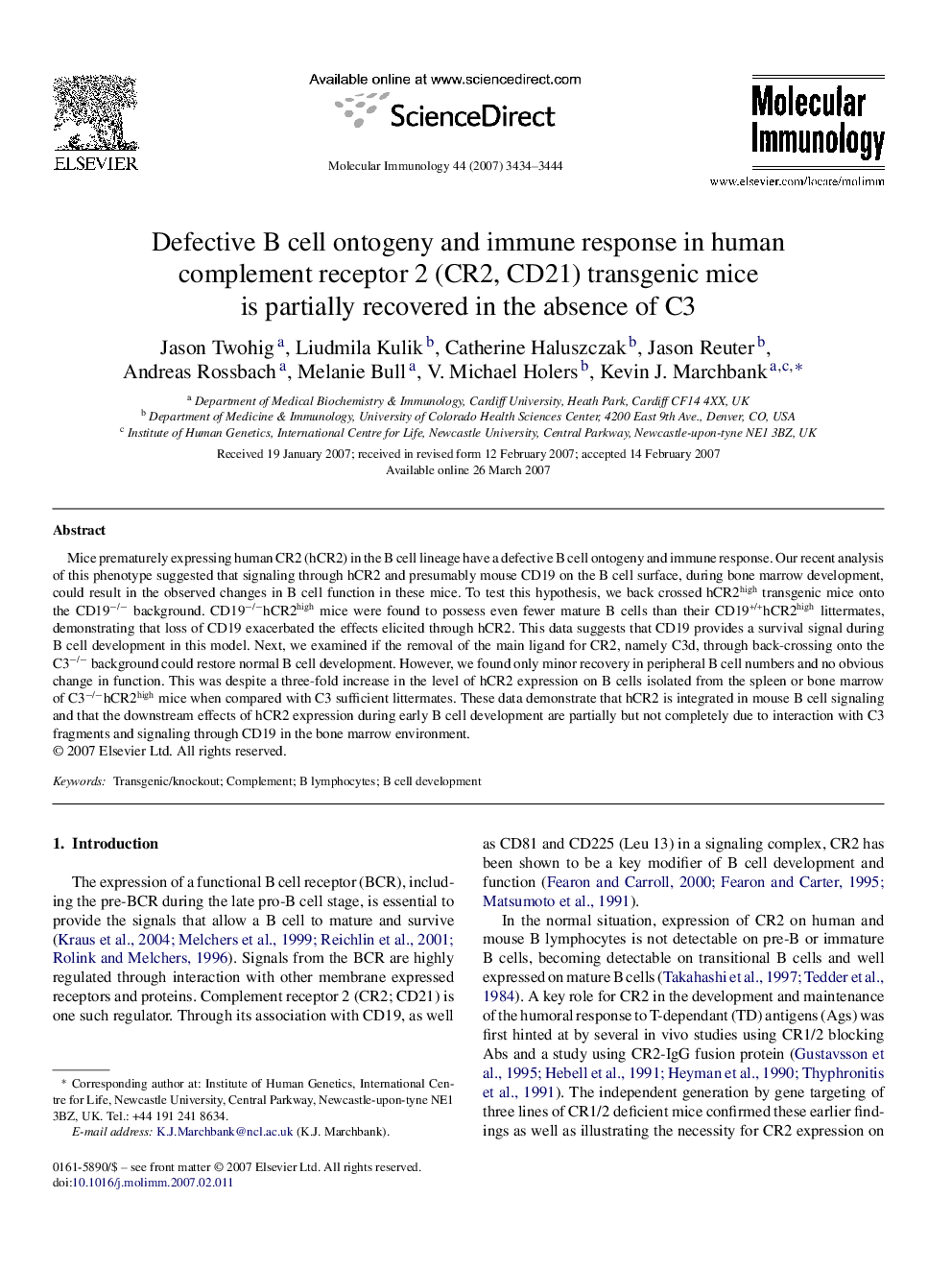| Article ID | Journal | Published Year | Pages | File Type |
|---|---|---|---|---|
| 2833220 | Molecular Immunology | 2007 | 11 Pages |
Mice prematurely expressing human CR2 (hCR2) in the B cell lineage have a defective B cell ontogeny and immune response. Our recent analysis of this phenotype suggested that signaling through hCR2 and presumably mouse CD19 on the B cell surface, during bone marrow development, could result in the observed changes in B cell function in these mice. To test this hypothesis, we back crossed hCR2high transgenic mice onto the CD19−/− background. CD19−/−hCR2high mice were found to possess even fewer mature B cells than their CD19+/+hCR2high littermates, demonstrating that loss of CD19 exacerbated the effects elicited through hCR2. This data suggests that CD19 provides a survival signal during B cell development in this model. Next, we examined if the removal of the main ligand for CR2, namely C3d, through back-crossing onto the C3−/− background could restore normal B cell development. However, we found only minor recovery in peripheral B cell numbers and no obvious change in function. This was despite a three-fold increase in the level of hCR2 expression on B cells isolated from the spleen or bone marrow of C3−/−hCR2high mice when compared with C3 sufficient littermates. These data demonstrate that hCR2 is integrated in mouse B cell signaling and that the downstream effects of hCR2 expression during early B cell development are partially but not completely due to interaction with C3 fragments and signaling through CD19 in the bone marrow environment.
